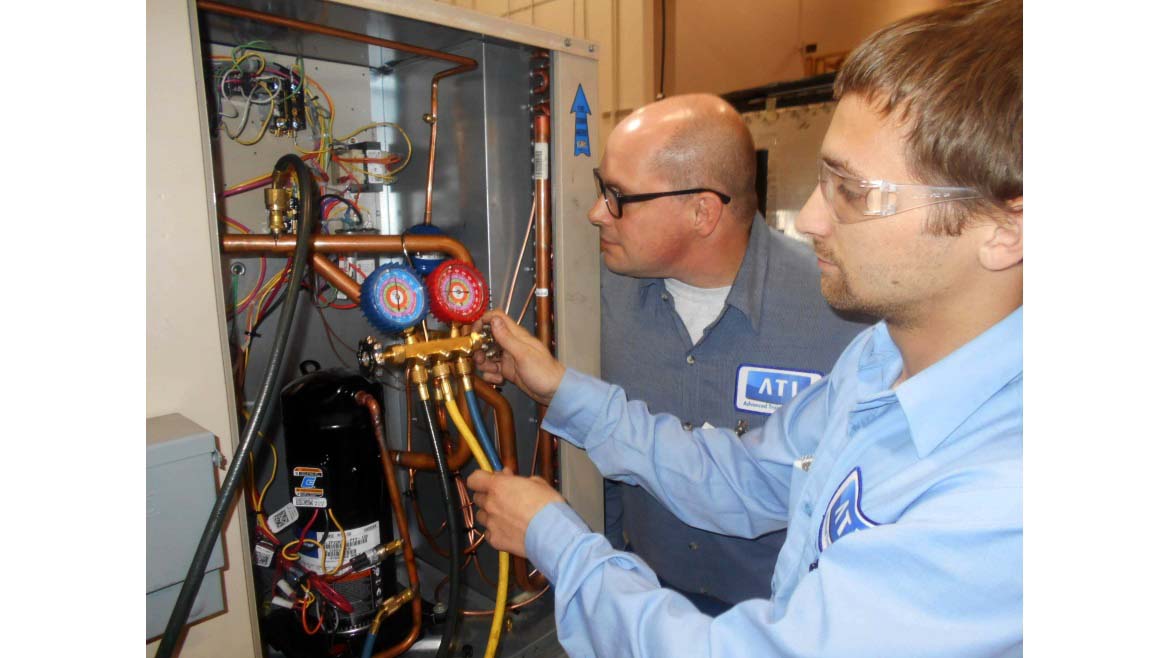Last month’s article examined two systems that were experiencing high compressor discharge temperatures. One system had too much refrigerant, while the other had a partially restricted liquid line. In both examples, the systems had starved evaporators with very high superheats coming back to the compressor, as well as high compressor discharge temperatures with low condensing temperatures.
Some other main reasons for high compressor discharge temperatures include:
- High condensing pressures;
- Low suction pressures; and
- High compression ratios
High Condensing Pressures
Just because a system has a high compressor discharge temperature doesn’t always mean that there will be a high condensing temperature. However, a system that has a high condensing temperature will usually have a high compressor discharge temperature. That’s because a high condensing temperature causes a high condensing pressure, due to the compressor having to work harder, thus generating more heat of compression from compressing the suction pressure. This higher heat of compression in the compression stroke will cause the compressor’s superheated discharge temperature to be higher.
Some of the causes for high condensing pressures include:
- Recirculated air over the condenser;
- Dirty condenser coils;
- Burned out condenser fans;
- Broken fan belts;
- Undersized condenser coils;
- Overcharge of refrigerant;
- Noncondensables in the system; and
- High ambient temperature.
Let’s look at a system that has a dirty condenser coil. The system is a low-temperature refrigeration application that uses R-134a as the refrigerant and has a TXV with a receiver.
| Measured Values | |
| Compressor discharge temperature | 250°F |
| Condenser outlet temperature | 110°F |
| Evaporator outlet temperature | 10°F |
| Compressor inlet temperature | 25°F |
| Ambient temperature | 70°F |
| Refrigerated space temperature | 15°F |
| Compressor amperage | High |
| Evaporating (low side) pressure | 6.2 psig (0°F) |
| Condensing (high side) pressure | 186.5 psig (125°F) |
| Calculated Values | |
| Condenser split | 55°F |
| Condenser subcooling | 15°F |
| Evaporator superheat | 10°F |
| Compressor superheat | 25°F |
The symptoms include:
- High discharge temperatures;
- High condensing pressures;
- High condenser splits;
- High-to-normal condenser subcooling;
- Normal-to-high evaporator pressures;
- Normal superheats;
- High compression ratios; and
- High compressor amp draw.
A 250°F compressor discharge temperature in this example will surely cause system problems. If the compressor’s discharge line temperature ever gets higher than 225°F, the system may start to fail from worn rings, acid formations, and oil breakdown. Remember, if the discharge temperature is 225°F, the actual discharge valve temperature will be about 75°F hotter, which will bring the actual compressor’s discharge valve to 300°F. If this occurs, serious overheating problems will happen. And, since compressor overheating problems are today’s most serious compressor problems, service technicians must always monitor compressor discharge temperatures and keep them under 225°F.
Low Suction Pressure
Low suction pressures can be caused from:
- Liquid line filters restricted;
- Undercharged systems;
- TXV or capillary tubes underfeeding;
- Low evaporator heat loads;
- End of the cycle;
- Frosted evaporator coils;
- Evaporator fan out;
- Kinked suction lines;
- Plugged suction line;
- Kinked liquid lines; and
- Plugged compressor inlet screens.
Again, more work, thus more heat of compression will be generated in compressing a lower suction pressure to the condensing pressure. This will cause the compressor discharge temperature to be higher.
High Compression Ratios
High compression ratios can be caused from low suction pressures, high head pressures, or a combination of the two. The higher the compression ratio, the higher the compressor’s discharge temperature will be and the greater chance for compressor overheating. This happens because more heat of compression will be generated when compressing the gases through a greater pressure range.
Compression ratio is simply the high-side absolute pressure divided by the low-side absolute pressure. If a system is running a head pressure of 235 psig and a suction pressure of 10 psig, the compression ratio would be:
(235 + 15) psia ÷ (10 + 15) psia = 250 psia ÷ 25 psia = 10 to 1 or 10:1
A compression ratio of 10:1 simply means that the high-side pressure is 10 times greater than the low-side pressure. The higher the compression ratio, the higher the heat of compression and the hotter the discharge temperature will be.
Compressor discharge temperatures reflect all of the latent heat absorbed in the evaporator, the evaporator superheat, all of the suction line superheat, and all of the heat of compression and motor generated heat at the compressor. It is at the discharge temperature where all of this heat is accumulated and starts being rejected in the discharge line and condenser. It is of utmost importance for the service technician to measure this temperature when servicing and troubleshooting a refrigeration or air conditioning system.



Report Abusive Comment